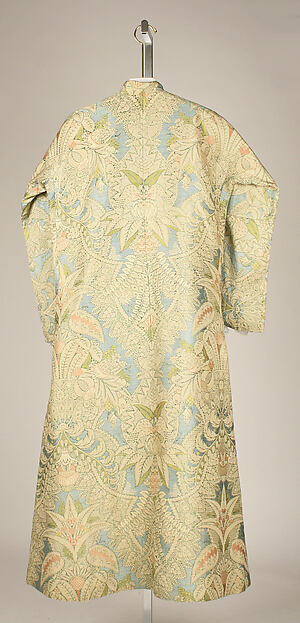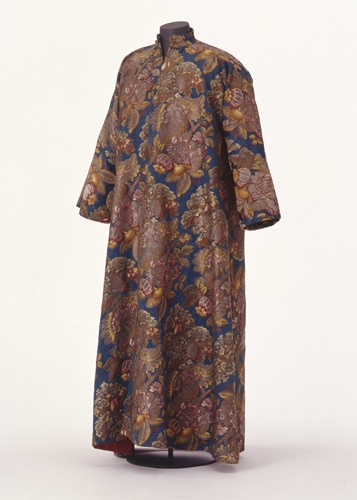White
White banyan with red flowers, 1750
Dutch silk banyan, 1760-80

Yellow
French silk banyan, 1730's

Dutch banyan, 1740-60

Reversible banyan of Indian silk, c. 1750

Red
Dutch banyan of Indian silk and cotton, 1740-70

British red silk banyan with gold thread

Dutch silk and satin banyan, 1760-70

Pink
French pale pink banyan, 1760's
German pink banyan, 1750-60
Blue
English silk banyan, 1730-40


Blue banyan of unknown origin, 1720-60

Possibly British silk banyan, 1750-60

English banyan of Chinese silk, 1760

Green
French green banyan, 1730's

Banyan that belonged to Jacques de Vaucauson, mid-18th century

French silk banyan, 1720's
British silk banyan, 1740's
Brown
English banyan, 1730-40

Banyan belonged to Thomas Carill-Wolsey, 1780's

German silk banyan

Bronze banyan with blue trimmings, c. 1760

English silk banyan, 1735

German silk banyan, 1727-33

Danish banyan, 1780












No comments:
Post a Comment